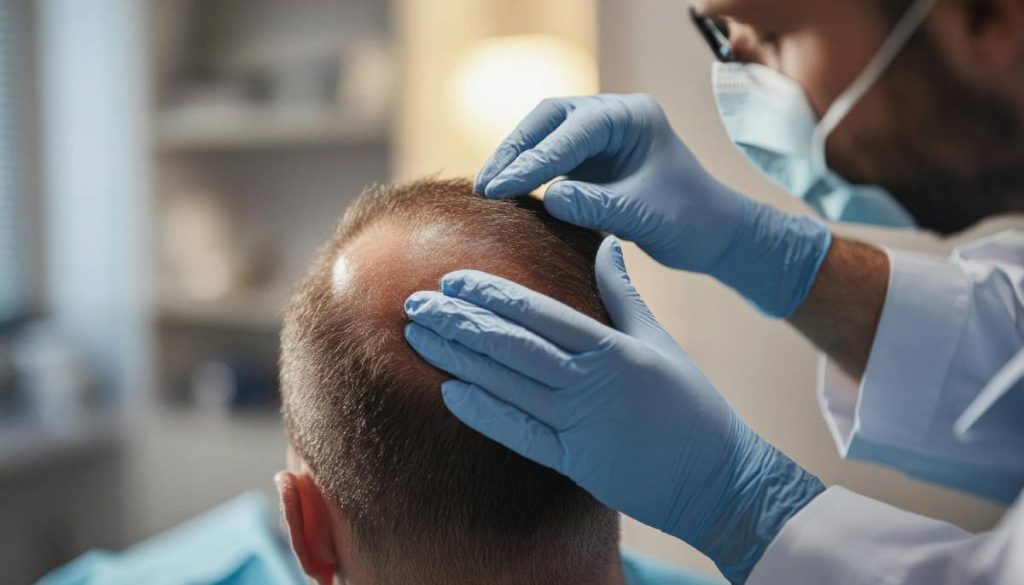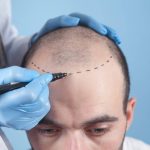Understanding Hair Transplantation: An Overview
Hair loss can be a distressing condition for many, and finding an effective solution is a priority for those seeking to restore their confidence. Hair transplantation offers a permanent and natural solution for individuals experiencing hair loss. The procedure involves extracting hair follicles from a healthy donor area, typically at the back of the head, and transplanting them into thinning or bald areas. These transplanted hair follicles continue to grow naturally, providing long-lasting and aesthetically pleasing results. Understanding how hair transplantation works is key to making an informed decision about whether this is the right solution for you.
Initial Consultation for Hair Transplantation
Before undergoing hair transplantation, an initial consultation with a skilled surgeon is essential. During this consultation, the surgeon will assess your hair loss pattern, scalp condition, and overall health. The surgeon will also discuss your expectations, desired hairline, and the number of grafts required. This consultation helps determine whether hair transplantation is the right option for you. Your surgeon will also explain the different techniques available and recommend the best approach based on your specific needs. A thorough discussion ensures that both you and the surgeon have a clear understanding of the procedure and its expected results.
Preparing for Hair Transplantation
Preparation is a crucial step in the hair transplantation process. Before the procedure, you may be asked to stop taking certain medications that could increase bleeding or interfere with the healing process. On the day of the procedure, the surgeon will mark the donor and recipient areas, ensuring a clear path for the extraction and transplantation of hair follicles. Local anesthesia will be administered to numb the scalp, ensuring that you are comfortable throughout the procedure. Preparation for hair transplantation ensures that the surgery is carried out smoothly and that the results are as successful as possible.
Extraction of Hair Follicles for Transplantation
The next step in the hair transplantation process involves extracting hair follicles from the donor area. There are two primary methods for this: Follicular Unit Extraction (FUE) and Follicular Unit Transplantation (FUT). FUE involves removing individual hair follicles using a tiny punch tool, while FUT involves removing a strip of scalp and then dividing it into individual follicular units. Both methods are effective, and the choice between them depends on the patient’s specific needs and the surgeon’s recommendation. This step is crucial as the health and quality of the transplanted hair follicles determine the success of the hair transplantation procedure.
Preparing and Implanting Hair Follicles
Once the hair follicles are extracted, the next step in hair transplantation is preparing them for implantation. The follicles are carefully sorted and prepared for insertion into the recipient area. Tiny incisions are made in the thinning or bald areas of the scalp to create space for the follicles. The surgeon then implants the hair follicles, placing them in a manner that mimics the natural direction of hair growth. This step is vital for ensuring that the transplanted hair looks natural and blends seamlessly with the surrounding hair. The precision with which the follicles are implanted plays a significant role in the success of hair transplantation.
Recovery After Hair Transplantation
After the procedure, the recovery process begins. Following hair transplantation, patients can expect some mild swelling, redness, and discomfort in the treated areas. These side effects typically subside within a few days. The surgeon will provide aftercare instructions, including how to protect the transplanted area from infection and when to resume normal activities. Patients may also experience shedding of the transplanted hair within the first few weeks, which is entirely normal. The new hair will begin to grow in the coming months, with full results visible in 12 to 18 months. Proper post-operative care is essential for ensuring that the transplanted hair grows successfully and that the healing process is as smooth as possible.
Long-Term Maintenance and Results
Once the transplanted hair begins to grow, it’s important to maintain regular visits to your surgeon for follow-up appointments. These visits allow the surgeon to monitor the progress of the hair transplantation and ensure that the transplanted follicles are growing properly. Most patients can return to normal activities within a few weeks, but it’s important to continue following your surgeon’s advice regarding hair care and protection. Over time, the transplanted hair will continue to grow naturally, and the final results of hair transplantation will become visible, usually after 12 to 18 months. The results are permanent, and the new hair will require minimal maintenance going forward.
Benefits of Hair Transplantation for Your Confidence
The final benefit of hair transplantation is the restoration of confidence and self-esteem. Many individuals suffering from hair loss feel self-conscious about their appearance, and this can impact their social and professional lives. After undergoing hair transplantation, patients often experience a significant boost in confidence, as they regain a full, natural-looking head of hair. The psychological benefits are just as important as the physical improvements, as patients feel more comfortable in social situations, more confident in their appearance, and more positive about their overall self-image.
Conclusion
In conclusion, hair transplantation is a highly effective and permanent solution for individuals struggling with hair loss. The process, which involves extracting healthy hair follicles and transplanting them to thinning or bald areas, provides long-lasting, natural-looking results. The procedure offers a significant boost in confidence and self-esteem, helping individuals regain their youthful appearance. By following the step-by-step process of hair transplantation, patients can enjoy a fuller head of hair and a restored sense of self-worth. It’s important to consult with an experienced surgeon to ensure the best possible results from your hair transplantation procedure.
Frequently Asked Questions
- What is hair transplantation?
- Hair transplantation is a surgical procedure where hair follicles are moved from a donor area to areas with thinning or no hair, providing a permanent solution to hair loss.
- How long does it take to see results from hair transplantation?
- New hair growth typically begins within 3 to 4 months, with full results visible after 12 to 18 months as the transplanted hair grows naturally.
- Is hair transplantation permanent?
- Yes, the transplanted hair is permanent, as the follicles continue to grow naturally throughout your life.
- How long does the hair transplantation procedure take?
- The procedure can take anywhere from 4 to 8 hours, depending on the number of grafts being transplanted and the technique used.
- Is hair transplantation painful?
- The procedure is performed under local anesthesia, so there is minimal pain during the surgery. Some mild discomfort or swelling may occur afterward, but it can be managed with pain relievers.
- How much does hair transplantation cost?
- The cost of hair transplantation varies depending on the number of grafts and the clinic, but it generally ranges from $4,000 to $15,000.
- What are the risks of hair transplantation?
- Although rare, risks include infection, scarring, and poor graft survival. Choosing an experienced surgeon can help minimize these risks.
- How long does it take to recover from hair transplantation?
- Most patients can return to normal activities within a few days, though full recovery and visible results typically take 12 to 18 months.
- Will the transplanted hair look natural?
- Yes, when performed by a skilled surgeon, the transplanted hair blends seamlessly with your existing hair, providing a natural appearance.
- What should I do after hair transplantation?
- Follow your surgeon’s post-surgery care instructions, including avoiding direct sunlight, not scratching the transplanted area, and taking any prescribed medications.












